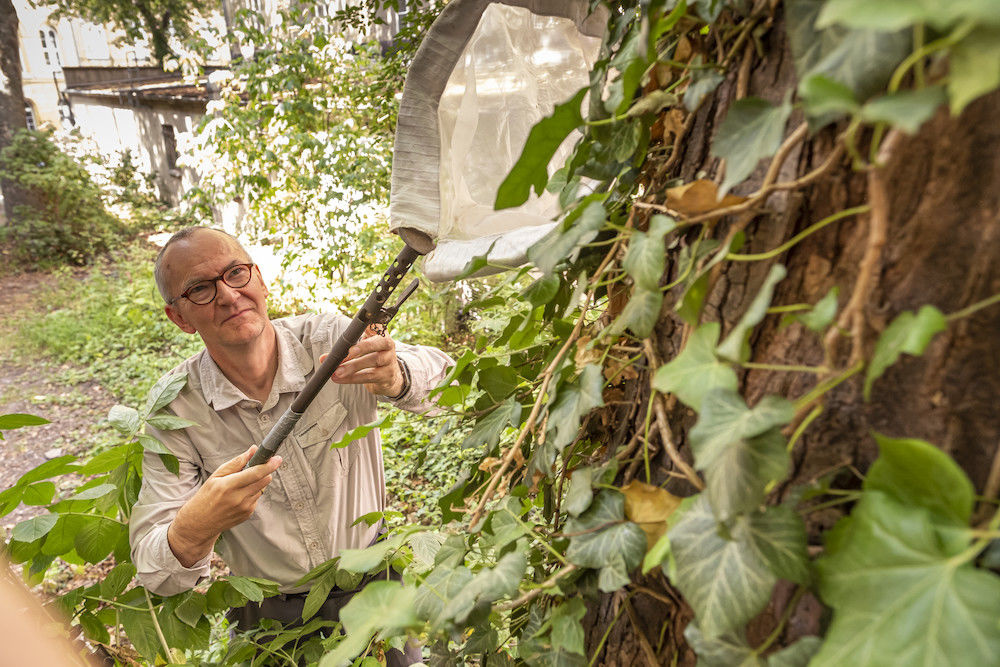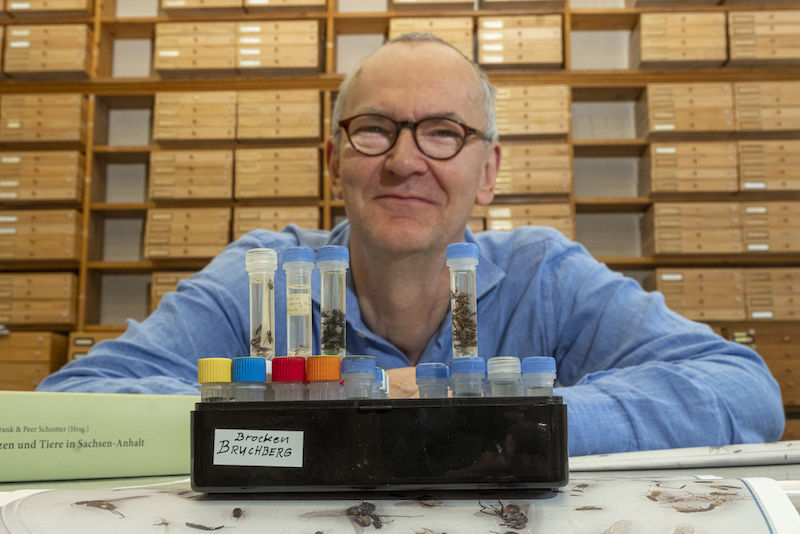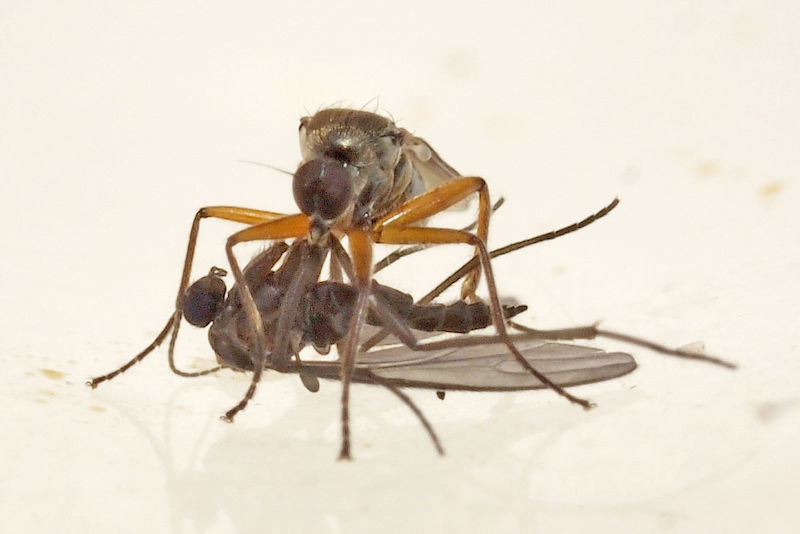The fly expert

It was a special kind of journey in February 2019. When the Seychelles saw fungus gnats multiply on a massive scale and become a problem for tourism, his expertise was in demand. “There I investigated whether there are gnat predators among flies,” says Dr Andreas Stark. He was called in by the Senckenberg German Entomological Institute because he is a proven fly expert. For decades, Stark has been dealing with diptera, almost exclusively as a civic scientist, part of “citizen science”, whose scientific value is increasingly coming to the fore. As a civic scientist he even discovered a new species in 1996, the Lamachella germanica, in the hollow of an old felled lime tree on the banks of the Saale river in Halle.
Initially, flies were of no interest to the 61-year-old. “They didn’t exist in my world,” says the Anklam native, who studied agrochemistry and crop protection in Halle. This changed in the 1980s with his doctoral thesis on the Oscinella frit, a fly and crop pest just two millimetres in size. During his work, he came across another group that ranks among the beneficial insects: “running robberflies”, also just two-to-three millimetres in size. “I got stuck on them,” says Stark. There are more than 250 species of running robberfly in Germany. Among them are coniferous forest and swamp experts. And animals that can virtually be found on every tree and bush. Professionally, however, the animals will soon no longer play a role for Stark. He remained an assistant at the University of Halle for five years after receiving his doctorate in 1987; he subsequently worked at the University of Lüneburg teaching general knowledge on species. However, in 1999 he moved to the customer service department of a printing company. Research became merely a hobby.
As early as 1994, Stark founded a publishing house in Halle, in addition to his job, and a magazine which, according to him, is one of the world’s most important specialising in flies, or dipterology. It is now published by the Senckenberg Institute. The entomologist estimates that he spends 80 percent of his free time on his hobby. For example, he can be seen with his net around Halle, by Salzigen See lake near Eisleben or in the Colbitz-Letzlinger Heide heath region in the north of the state, looking after containers of catches, which are used to help research over longer periods of time. In recognition of the importance of Stark’s work for nature conservation, the State Office for Environmental Protection has issued Stark with the appropriate access and catch permits. He always has his net; even on holidays abroad. In Saxony-Anhalt, the expert was responsible for the Red List of Dolichopodidae (long-legged flies). In 2016 he, like many other civic scientists, was one of the authors of a more than 1000-page directory of the country’s animal and plant species.
Since 2018, Stark has been working as a project collaborator at the University’s natural science collections (ZNS). In a project with the Leopoldina National Academy of Sciences, he is now working on his second hobby: the shells and housings of snails and fossil molluscs. However, he has known the natural science collections for a long time simply through contact with the Entomological Association, which is headquartered there. “There's a lot of undetermined material in collections,” says the man from Halle. For example, in the fly collection of the landowner and entomologist Victor von Röder, who died in 1910. In cases like this, civil scientists like him help with the determination.
The head of the natural science collections Dr Frank Steinheimer explained the importance of citizen science in June, when an interdisciplinary conference of Halle’s natural history associations took place at the institution for the first time – four of these alone meet regularly at the natural science collections. The University’s natural science collections will be 250 years old this November, and private collections “were quickly added” following the founding collections from two professors, says Steinheimer. One of the best known, an egg collection, also comes from a hobby researcher: Max Schönwetter, a surveyor, has even elevated oology to the rank of a science. In 2012, the collection of 19,206 bird eggs of 3,839 species was included in the “Official national list of valuable cultural assets” as one of the three most species-rich and important bird egg collections in the world.
Today, the natural science collections receive around a quarter of a million new items every year, most of which are insects. They notably form the basis for the creation of Red Lists of endangered species. In addition to this, old collections are constantly being reconsidered and scientifically classified, which requires specialists, according to Steinheimer. The natural science collection's eight employees have around 25 civil scientists at their disposal, some of whom are also responsible for custodial work. “We wouldn’t be where we are without them,” says the head of the natural science collections.
Andreas Stark has already handed over items to the natural science collections. He has a big collection at home. The expert estimates that it consists of around 200,000 already determined flies of around 4,000 species worldwide, stored in small tubes and jars. Around two million specimens from his collection have not yet been determined. The 61-year-old is still fascinated today. “When it comes to flies, you really can discover something new,” he says. New species or animals in Halle that were thought to only exist in the foothills of the Alps. “It is always diverse.”
In the Seychelles he incidentally found fungus gnat rivals, but they were not the solution to the problem.
Dr Andreas Stark
University’s natural science collections
Telephone: +49 345 55-26538
Mail: andreas.stark@zns.uni-halle.de


